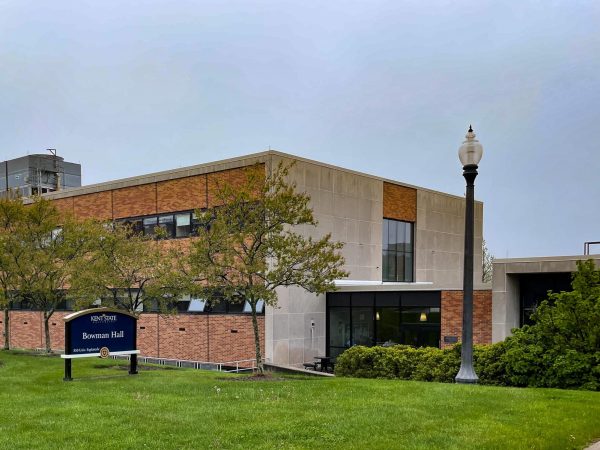Preparing for winter’s ice, snow and slush can help drivers avoid dangerous situations
November 30, 2007
With the winter season officially arriving in less than a month, the public could see more rain and snow on the roads very soon.
Steve Prebynski, driving instructor at Heights Driving School in Ravenna, said the biggest problem when bad weather strikes is people who don’t adjust to the conditions.
“It becomes such a habit that they don’t really think about what they’re doing or how they’re doing it,” he said. “It’s not that (people) don’t have common sense, it’s that they’re just not using it.”
When the streets are covered with snow or slush, Prebynski said it’s important for drivers to feel like the tires on their vehicles are in contact with the pavement. With not enough tire pressure on the roads, he said it is easier for vehicles to slip or slide. He suggested controlling the speed to help maintain that pressure.
“First of all the obvious, slow down,” Prebynski said. “Drive speeds that they feel like their vehicle has contact with the road, and it doesn’t feel like they’re kind of gliding on top.”
If a driver feels his or her vehicle starting to slide, Prebynski said to ease off the brake pedal and then break again a little lighter. Continue this, he said, until the vehicle is under control. If the driver can’t get the car under control, Prebynski suggested easing off the brake pedal, putting the car into neutral gear and then braking again.
“This gives you about 75 percent more control over the vehicle to slow it down and to stop it,” he said, “and always steer out of the direction that the car is starting to head.”
Don Marteny, store manager at Stow-Kent Goodyear Gemini, said having proper tread depth on tires can make a huge difference in how much traction they get in wet and slushy conditions.
“The only way to get traction in the wintertime is you have to have some place for the rain and snow to go in your tire,” he said.
Lateral grooves and deep tread depth allow slush and water to be displaced, so more of the tire is in contact with the ground, Marteny said. Specialized winter tires can have deeper grooves to facilitate this process more efficiently.
“Probably first and foremost is to have a good amount of tread on your tires, but secondarily, you also want to have the kind of tread that’s going to get you real good winter traction,” Marteny said. “There’s a huge difference between a summer performance tire and a winter tire.”
Along with monitoring tread depth, Marteny suggested checking tire pressure once a week.
“It’s just a good idea to keep an eye on your tires for foreign objects, for tread and tire pressure,” he said. “Those three things will go a long way to making you a lot safer on the road.”
Prebynski said a lot of drivers only get their vehicles checked when they notice something isn’t working properly, but regular tune-ups are very important.
“Especially before winter, definitely take it to someone you know, you trust, you get referred to,” he said. “Have them check it out like you’re going to be going on a cross-country trip or something, and see if they feel your vehicle would make it.”
According to the Ohio Department of Public Safety 2006 Traffic Crash Statistics, the number of total crashes in Ohio in snowy conditions was 11,384 last year. In clear conditions, the number of total crashes was 175,961. Prebynski said the lower number of car crashes in snowy conditions could be a result of people being more careful.
“The worse the weather, you will get more people that will adjust, that will slow down, that will be thinking while they’re driving,” he said. “Whereas when it’s clear. they feel like they can just go and don’t have to worry because if anything happens. they can handle it.”
Prebynski’s main advice for drivers this winter is, “always drive with patience, always take your time, control your speed and adjust to the conditions.”
Contact public affairs reporter Kira Meixner at [email protected].























